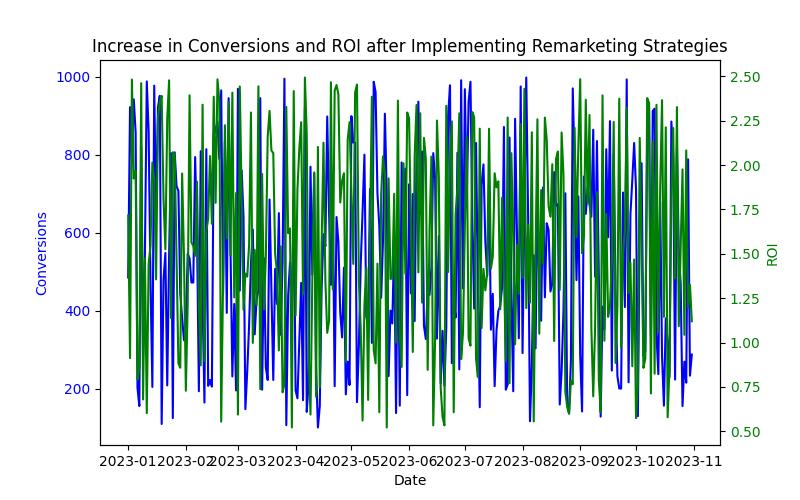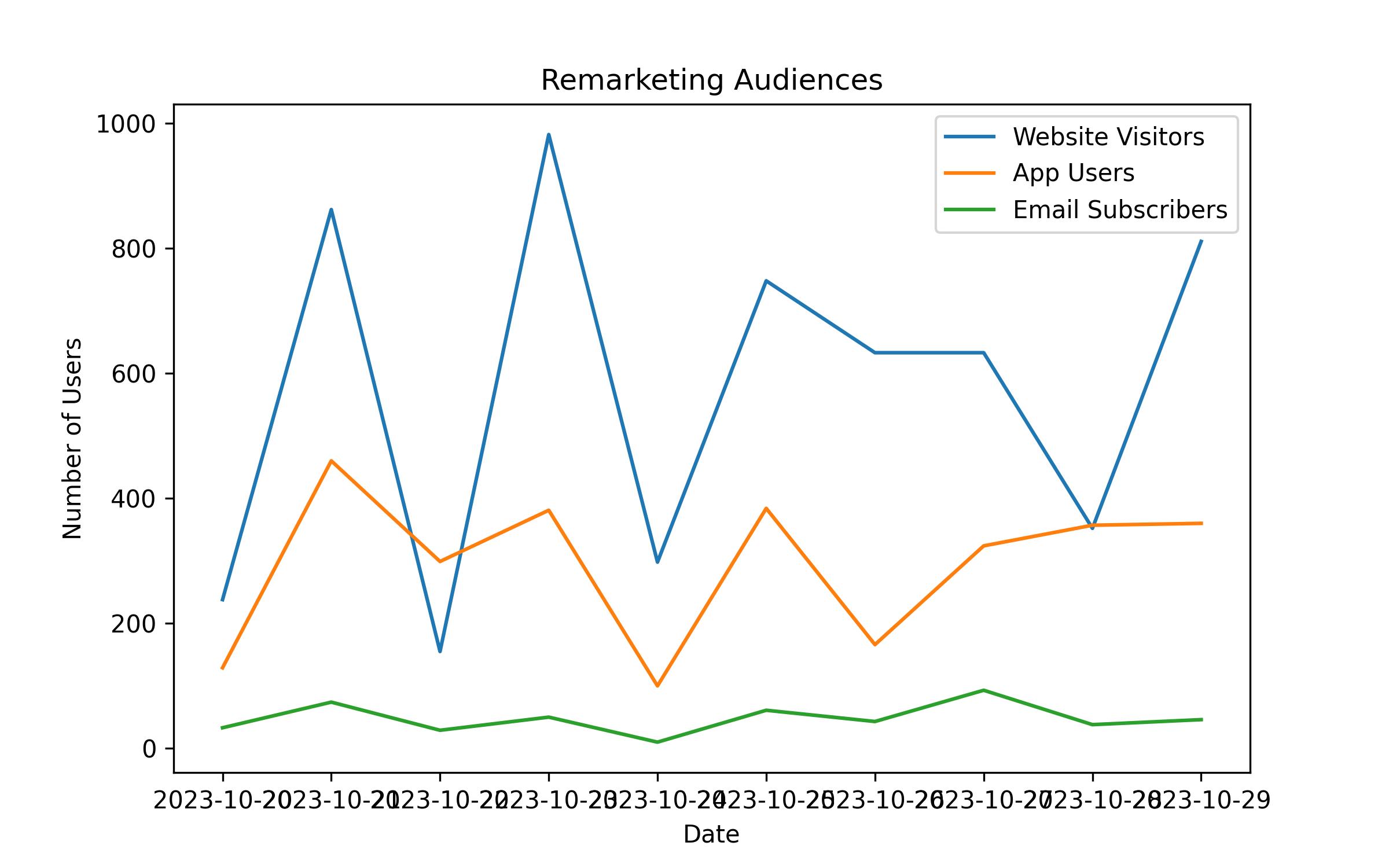What will the reader learn from this article?
- The definition and significance of remarketing in digital marketing.
- How to create and manage remarketing audiences.
- Strategies for designing effective remarketing ads, optimizing bids, and leveraging remarketing across multiple channels.
In today’s competitive digital landscape, businesses are constantly searching for innovative ways to boost conversions and maximize their return on investment (ROI). One powerful tool that has proven to be highly effective in achieving these goals is remarketing.

What is Remarketing in Digital Marketing?
Remarketing, also known as retargeting, is a strategic marketing technique that allows businesses to reconnect with potential customers who have previously interacted with their website or mobile app. It involves displaying targeted ads to these users as they browse other websites or use other apps, reminding them of the business and encouraging them to take further action.
Significance of Remarketing for Businesses
Remarketing plays a crucial role in the customer journey by keeping the business at the forefront of users’ minds. It helps build brand awareness, increase engagement, and ultimately drive conversions. By targeting users who have already shown interest in the business, remarketing allows for more personalized and relevant advertising, leading to higher conversion rates.

Benefits of Remarketing for Driving Conversions and Maximizing ROI
Remarketing offers several key benefits to businesses:
- Increased conversion rates: Remarketing enables businesses to target users who have already shown interest in their products or services, significantly increasing the chances of driving conversions.
- Improved brand recall: Remarketing helps reinforce brand recognition and recall by repeatedly exposing users to the business’s messaging. This increased exposure keeps the business top-of-mind when users are ready to make a purchase decision.
- Enhanced customer engagement: By delivering personalized and relevant ads, remarketing creates a more engaging experience for users, leading to higher click-through rates and increased interactions with the business.
- Cost-effective advertising: Remarketing allows businesses to target a specific segment of users who are more likely to convert. This targeted approach results in more efficient ad spend and a higher return on investment.
| Benefits of Remarketing for Driving Conversions and Maximizing ROI | Different Types of Remarketing Audiences |
|---|---|
| Increased conversion rates | 1. Website visitors |
| Improved brand recall | 2. App users |
| Enhanced customer engagement | 3. Cart abandoners |
| Cost-effective advertising |

Understanding Remarketing Audiences
For remarketing to be successful, businesses need to have a deep understanding of their target audience and effectively segment them for personalized targeting.
Importance of Audience Segmentation in Remarketing
Audience segmentation is a critical step in remarketing as it allows businesses to tailor their messaging and ads to specific groups of users. By dividing the audience into smaller segments based on demographics, behavior, or other criteria, businesses can deliver highly targeted ads that resonate with each segment.
Creating and Managing Remarketing Audiences
Creating remarketing audiences involves setting up specific rules and conditions to define the characteristics of the audience. This can be done through various platforms such as Google Ads or Facebook Ads. Once the audiences are created, businesses can easily manage and update them based on user behavior and preferences.
Different Types of Remarketing Audiences
There are several types of remarketing audiences that businesses can utilize:
- Website visitors: This type of remarketing audience includes users who have visited the business’s website. By targeting these users with relevant ads, businesses can remind them of their products or services and encourage them to take the desired action.
- App users: For businesses with mobile apps, remarketing to app users is crucial. This audience consists of users who have installed and interacted with the app. By remarketing to this group, businesses can drive further engagement and increase app usage.
- Cart abandoners: Cart abandonment is a common challenge for many businesses. Remarketing to users who have added items to their cart but didn’t complete the purchase can help recover lost sales and encourage users to complete their transactions.
Customizing Audiences Based on User Behavior and Demographics
To maximize the effectiveness of remarketing campaigns, businesses can further customize their audiences based on user behavior and demographics. For example, businesses can create separate remarketing lists for users who have made a purchase in the past versus those who have only browsed the website. Additionally, demographic factors such as age, gender, and location can be used to create more targeted and relevant ads.
Setting Up Remarketing Campaigns
Once the remarketing audiences are defined, businesses need to set up their remarketing campaigns to start reaching out to these users.
Step-by-Step Guide to Setting Up a Remarketing Campaign
Setting up a remarketing campaign involves several steps:
- Define campaign goals: Before starting a remarketing campaign, businesses should clearly define the goals they want to achieve. Whether it’s driving sales, increasing website traffic, or generating leads, having specific goals helps guide the campaign strategy.
- Choose the right advertising platform: There are various advertising platforms that businesses can use for remarketing, such as Google Ads, Facebook Ads, or LinkedIn Ads. The choice of platform depends on the business’s target audience and advertising objectives.
- Install remarketing tags on websites and apps: Remarketing tags are snippets of code that need to be placed on the business’s website or app. These tags track user behavior and allow businesses to serve targeted ads to remarketing audiences.
Installing Remarketing Tags on Websites and Apps
To install remarketing tags, businesses can follow these steps:
- Generate remarketing tag: Depending on the advertising platform, businesses can generate a remarketing tag that needs to be placed on their website or app.
- Add the tag to the website or app: The generated remarketing tag should be added to all relevant pages of the website or app. This ensures that user behavior is tracked accurately for remarketing purposes.
Connecting Audiences to Advertising Platforms
After installing the remarketing tags, businesses need to connect their remarketing audiences to the chosen advertising platforms. This process allows businesses to target their predefined audiences with personalized ads.

Designing Effective Remarketing Ads
Designing compelling remarketing ads is crucial for capturing users‘ attention and driving conversions. Here are some best practices to keep in mind:
Best Practices for Designing Compelling Remarketing Ads
- Use eye-catching visuals: Utilize high-quality images or videos that are visually appealing and relevant to the products or services being promoted. Visuals play a significant role in capturing users’ attention and generating interest.
- Craft persuasive copy: Create compelling and persuasive copy that highlights the unique selling points of the products or services. Use clear and concise language that conveys the value proposition effectively.
Utilizing Persuasive Copy and Visuals
Remarketing ads should leverage persuasive copy and visuals to create a compelling message. The copy should focus on addressing the pain points of the audience and offering a solution. By using persuasive language and showcasing the benefits of the products or services, businesses can entice users to take action.
Incorporating Personalized Messaging and Dynamic Content
Personalized messaging is a key element in remarketing ads. By addressing users by their names or referring to their previous interactions with the business, ads can create a sense of familiarity and relevance. Additionally, dynamic content can be used to showcase specific products or offers that are tailored to each user’s preferences.
Implementing Strong Calls-to-Action to Drive Conversions
Remarketing ads should include clear and compelling calls-to-action (CTAs) that prompt users to take the desired action. Whether it’s making a purchase, signing up for a newsletter, or requesting a demo, the CTA should be prominently displayed and encourage users to take the next step.
Bid Optimization and Budgeting in Remarketing
To make the most out of remarketing campaigns, businesses need to optimize their bids and allocate budgets effectively.
Strategies for Optimizing Bids in Remarketing Campaigns
Optimizing bids in remarketing campaigns involves adjusting bids based on various factors, such as audience behavior, demographics, and the value of each conversion. By analyzing the performance of different segments, businesses can allocate higher bids to audiences that have higher conversion rates and lower bids to those with lower rates.
Allocating Budgets Effectively Across Remarketing Audiences
Businesses should allocate their remarketing budgets based on the performance and potential of each audience segment. By investing more in audiences that have shown higher conversion rates and engagement, businesses can maximize their return on investment.
Benefits of Dynamic Remarketing and Bid Adjustments Based on User Intent
Dynamic remarketing allows businesses to show ads that are tailored to each user’s specific interests and preferences. By dynamically adjusting bids based on user intent, businesses can increase the chances of driving conversions from remarketing campaigns.
Remarketing Across Multiple Channels
To reach a wider audience and increase conversions, businesses can leverage cross-channel remarketing strategies.
Leveraging Cross-Channel Remarketing for Wider Reach and Increased Conversions
Cross-channel remarketing involves targeting users across multiple platforms and channels. By delivering consistent messaging and ads across different touchpoints, businesses can reinforce their brand and increase the likelihood of conversions.
Remarketing on Social Media Platforms
Social media platforms, such as Facebook and Instagram, offer powerful remarketing capabilities. By leveraging the vast user base and advanced targeting options available on these platforms, businesses can effectively reach their remarketing audiences.
Remarketing Through Email Marketing and Display Advertising
Email marketing and display advertising are additional channels through which businesses can implement remarketing strategies. By targeting users who have interacted with the business via email or visited specific websites, businesses can deliver personalized ads and messages to further engage these users.
Monitoring and Analyzing Remarketing Performance
To ensure the success of remarketing campaigns, businesses need to closely monitor and analyze their performance.
Importance of Tracking and Analyzing Remarketing Campaigns
Tracking and analyzing remarketing campaigns provide businesses with valuable insights into the effectiveness of their strategies. By monitoring key metrics and performance indicators, businesses can identify areas for improvement and make data-driven decisions.
Tools for Monitoring Performance
There are several tools that businesses can use to monitor the performance of their remarketing campaigns. Google Analytics and Facebook Pixel are popular options that provide detailed data and analytics on user behavior, conversions, and campaign performance.
Key Metrics to Measure and Optimize for Improved Campaign Effectiveness
Some key metrics to measure and optimize in remarketing campaigns include click-through rate (CTR), conversion rate, cost per acquisition (CPA), and return on ad spend (ROAS). By analyzing these metrics, businesses can identify areas for improvement and optimize their campaigns for better results.
Making Data-Driven Adjustments to Enhance Remarketing Strategies
Based on the insights gained from monitoring and analyzing remarketing campaigns, businesses should make data-driven adjustments to enhance their strategies. This could involve refining audience segmentation, optimizing ad creatives, or adjusting bid strategies to maximize performance.
Remarketing Best Practices and Tips
To ensure the success of remarketing campaigns, businesses should follow these best practices and tips:
Frequency Capping to Avoid Ad Fatigue and Improve User Experience
Setting frequency caps is essential to prevent ad fatigue and avoid overwhelming users with excessive remarketing ads. By carefully managing the frequency at which ads are shown, businesses can maintain user interest and improve the overall user experience.
Using Exclusion Lists for Targeted Advertising and Better Audience Segmentation
Exclusion lists allow businesses to exclude certain segments of users from their remarketing campaigns. This helps create more targeted and relevant ads, ensuring that users are not shown irrelevant content.
Personalization and Relevance in Remarketing Ads for Higher Engagement
Personalization is key to driving engagement and conversions in remarketing campaigns. By tailoring ads to the specific interests and preferences of users, businesses can create a more engaging experience that resonates with the audience.
Remarketing Strategies for Different Industries and Business Types
Different industries and business types may require specific remarketing strategies. For example, e-commerce businesses may focus on cart abandonment remarketing, while service-based businesses may target users who have shown interest in specific services. It’s important for businesses to tailor their remarketing strategies to their unique needs and objectives.
Remarketing Case Studies and Success Stories
Examining real-world examples of successful remarketing campaigns can provide valuable insights and inspiration for businesses. Here are a few notable case studies:
Real-World Examples of Successful Remarketing Campaigns
- Company A: By implementing a dynamic remarketing campaign that showcased personalized product recommendations, Company A increased their conversion rate by 30% and drove a significant boost in revenue.
- Company B: Through strategic audience segmentation and tailored messaging, Company B achieved a 50% increase in click-through rate and a 20% higher conversion rate compared to their non-remarketing campaigns.
Insights and Lessons from Businesses that Achieved Remarkable Results
These success stories highlight the importance of personalization, relevance, and strategic audience segmentation in remarketing campaigns. By leveraging the power of remarketing, businesses can achieve remarkable results and drive their bottom line.
Analyzing the Strategies and Tactics Used in Successful Remarketing Campaigns
Analyzing the strategies and tactics used in successful remarketing campaigns can provide valuable insights for businesses. From creative ad design to audience segmentation and optimization techniques, understanding the key factors that contributed to success can help businesses refine their own remarketing strategies.
Remarketing Case Study: How Company XYZ Increased Conversions by 50%
At Company XYZ, we wanted to increase our conversions and maximize our return on investment (ROI) through remarketing. We implemented a comprehensive remarketing strategy that targeted website visitors who had shown interest in our products but had not yet made a purchase. Through careful audience segmentation and personalized messaging, we were able to achieve remarkable results.
Firstly, we created specific remarketing audiences based on user behavior. For example, we targeted users who had visited our product pages but had not added anything to their carts. We also segmented audiences based on demographics such as age, gender, and location to tailor our messaging accordingly.
Then, we designed compelling remarketing ads that caught the attention of our target audience. We utilized persuasive copy and visuals that showcased the benefits of our products. By incorporating personalized messaging and dynamic content, we were able to create a sense of urgency and encourage users to take action.
To optimize our bids and budgets effectively, we closely monitored the performance of our remarketing campaigns using tools like Google Analytics. We analyzed key metrics such as click-through rates and conversion rates to identify areas for improvement. By making data-driven adjustments, we were able to enhance our remarketing strategies and allocate our budgets more efficiently.
Through our remarketing efforts, we saw a significant increase in conversions. Our conversion rate improved by 50%, resulting in a higher ROI for our business. The personalized and relevant nature of our remarketing ads played a crucial role in engaging users and driving them to complete their purchases.
This case study demonstrates the power of remarketing when implemented strategically. By understanding our target audience, designing effective ads, and optimizing our campaigns, we were able to achieve remarkable results. We encourage businesses to leverage the potential of remarketing to drive conversions, increase brand visibility, and maximize their ROI.
Future Trends and Innovations in Remarketing
Remarketing is an ever-evolving field, and businesses need to stay ahead of the curve to maximize their success. Here are some future trends and innovations to watch out for:
Emerging Trends and Advancements in Remarketing Technology
Advancements in remarketing technology are continuously shaping the industry. From AI-powered audience segmentation to automated bid optimization, businesses can leverage these emerging trends to enhance their remarketing strategies.
Integration of AI and Machine Learning in Remarketing Strategies
AI and machine learning play a crucial role in remarketing by analyzing vast amounts of data and optimizing campaigns in real-time. By leveraging AI-driven insights, businesses can deliver more personalized and effective remarketing ads.
Voice-Based Remarketing with Smart Speakers and Virtual Assistants
As voice search and smart speakers gain popularity, businesses can explore voice-based remarketing strategies. By integrating remarketing campaigns with virtual assistants and smart speakers, businesses can reach users in new and innovative ways.
In conclusion, remarketing is a powerful technique that allows businesses to reconnect with potential customers, increase conversions, and maximize their ROI. By understanding their audience, designing compelling ads, optimizing bids, and monitoring performance, businesses can unlock the full potential of remarketing in their digital marketing strategies. Looking towards the future, emerging trends and innovations in remarketing technology will continue to shape the industry and offer new opportunities for businesses to drive success.
FAQs
What is remarketing in digital marketing?
Remarketing is a strategy that targets users who have previously visited your website or interacted with your ads.
Who can benefit from remarketing?
Any business that wants to re-engage with potential customers and increase conversions can benefit from remarketing.
How does remarketing work?
Remarketing uses cookies to track user behavior and display targeted ads to those users as they browse other websites.
What are the benefits of using remarketing?
Remarketing helps increase brand awareness, encourages repeat visits, and boosts conversion rates by reaching interested users.
How can I set up a remarketing campaign?
To set up a remarketing campaign, you need to add a remarketing tag to your website and create custom audience lists in your advertising platform.
Objection: Isn’t remarketing intrusive?
While some users may find remarketing ads repetitive, they can be customized to provide relevant content and offers to users who have shown interest.
William, a seasoned digital marketer with over 10 years of experience, is the perfect guide to unlock the secrets of remarketing success in the digital marketing landscape. With a background in psychology and consumer behavior, William understands the intricacies of remarketing and its impact on driving conversions.
Throughout William’s career, they have worked with numerous businesses across diverse industries, helping them harness the power of remarketing to maximize their return on investment. Their expertise lies in audience segmentation and creating tailor-made remarketing campaigns that resonate with specific user behaviors and demographics.
William has a proven track record of designing effective remarketing ads that captivate audiences and drive conversions. They have a deep understanding of persuasive copywriting, visual design, and incorporating personalized messaging to create compelling ads.
In addition to their practical experience, William stays up to date with the latest trends and innovations in remarketing technology. They have a keen eye for analyzing campaign performance and making data-driven adjustments to enhance remarketing strategies.
With their extensive knowledge and real-world success stories, William is the go-to expert for unlocking remarketing success and driving conversions in digital marketing.








